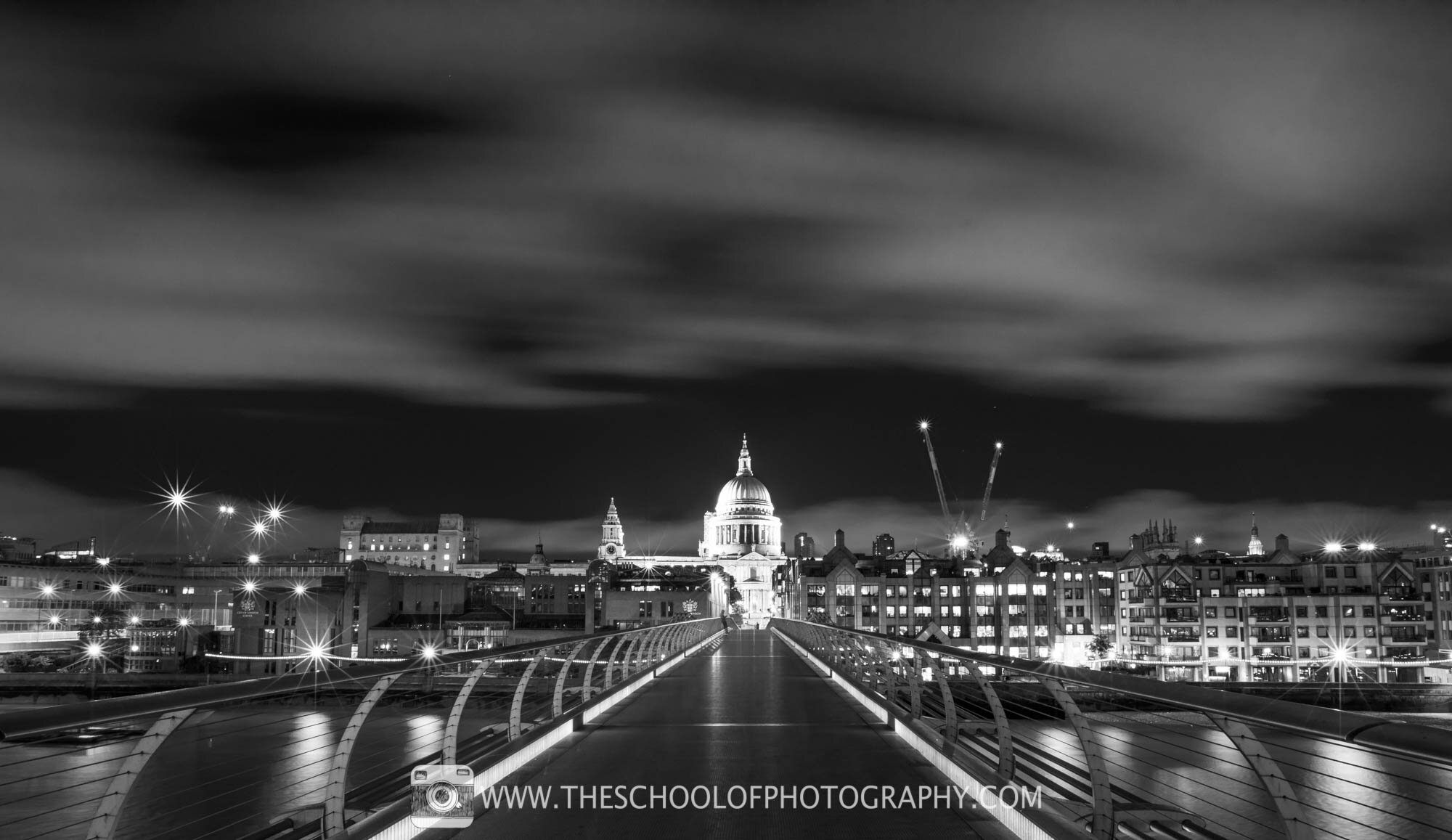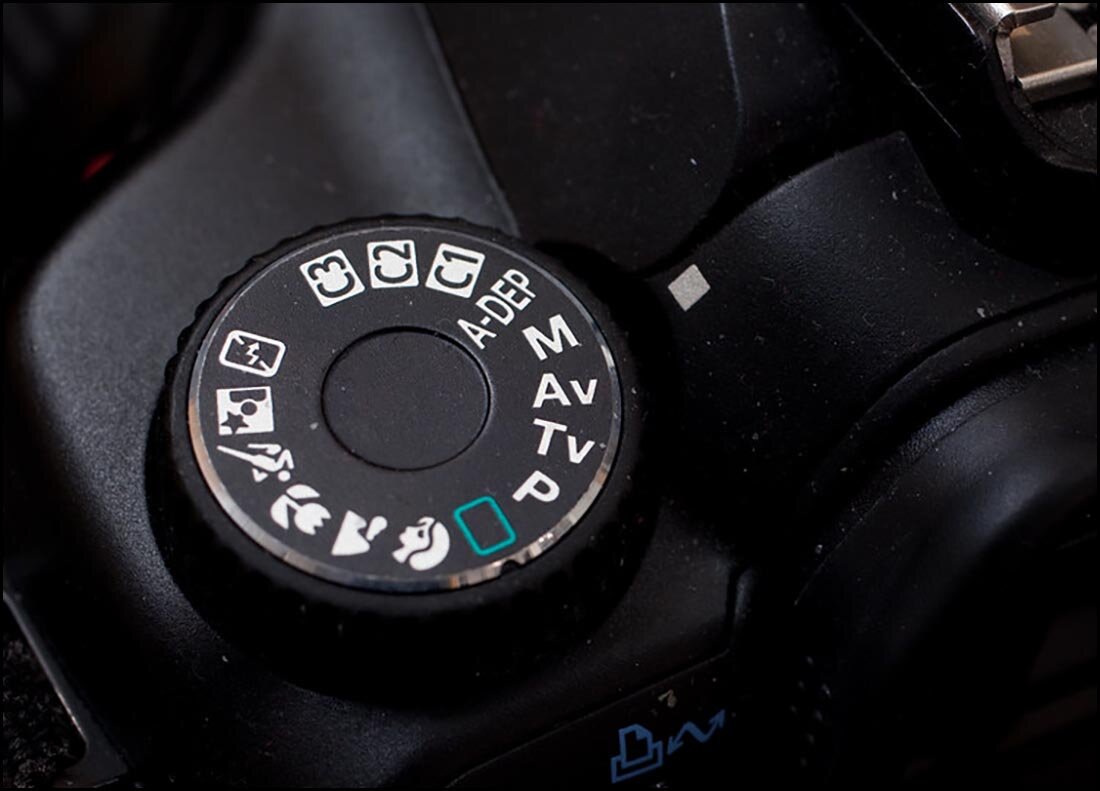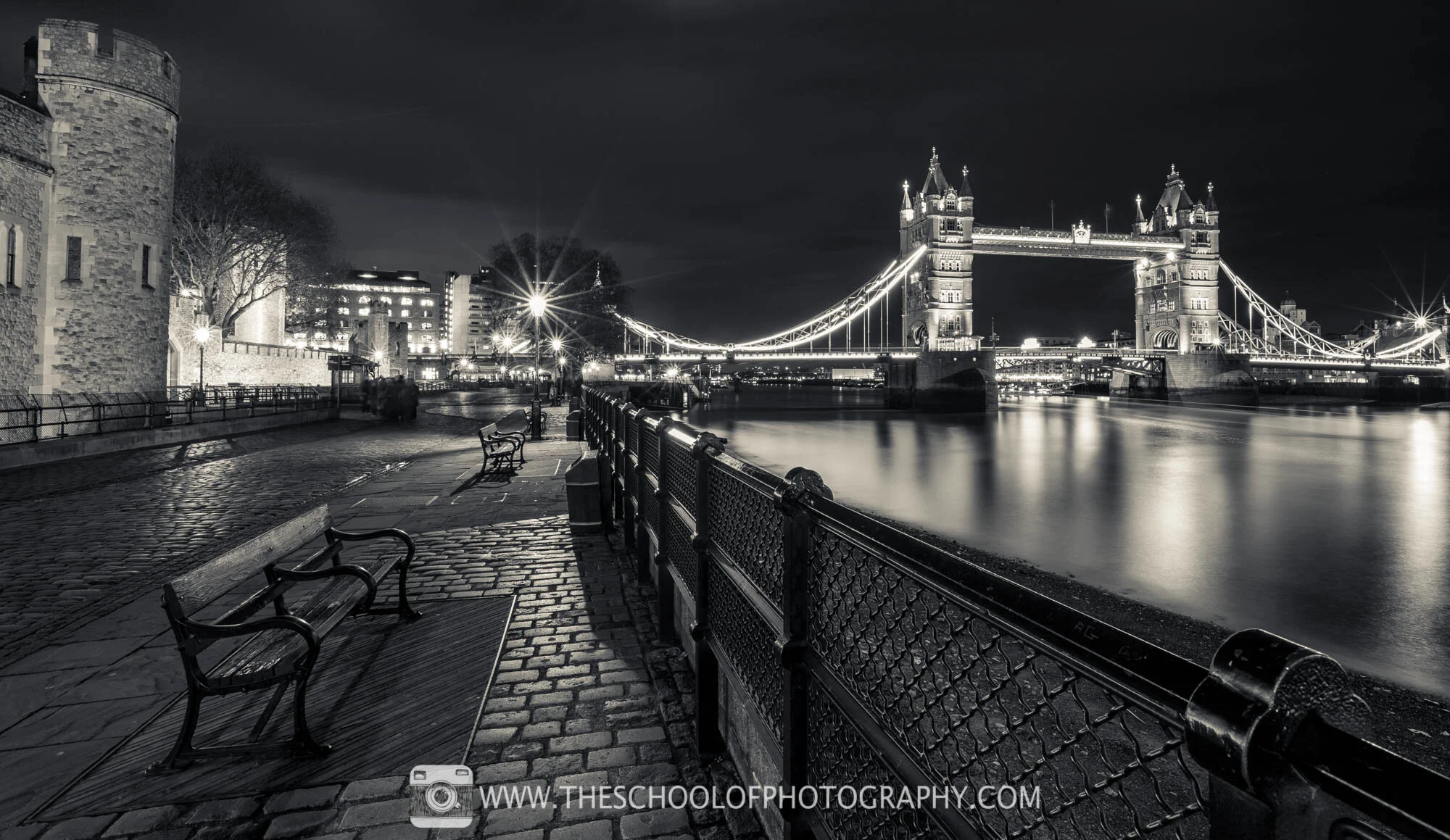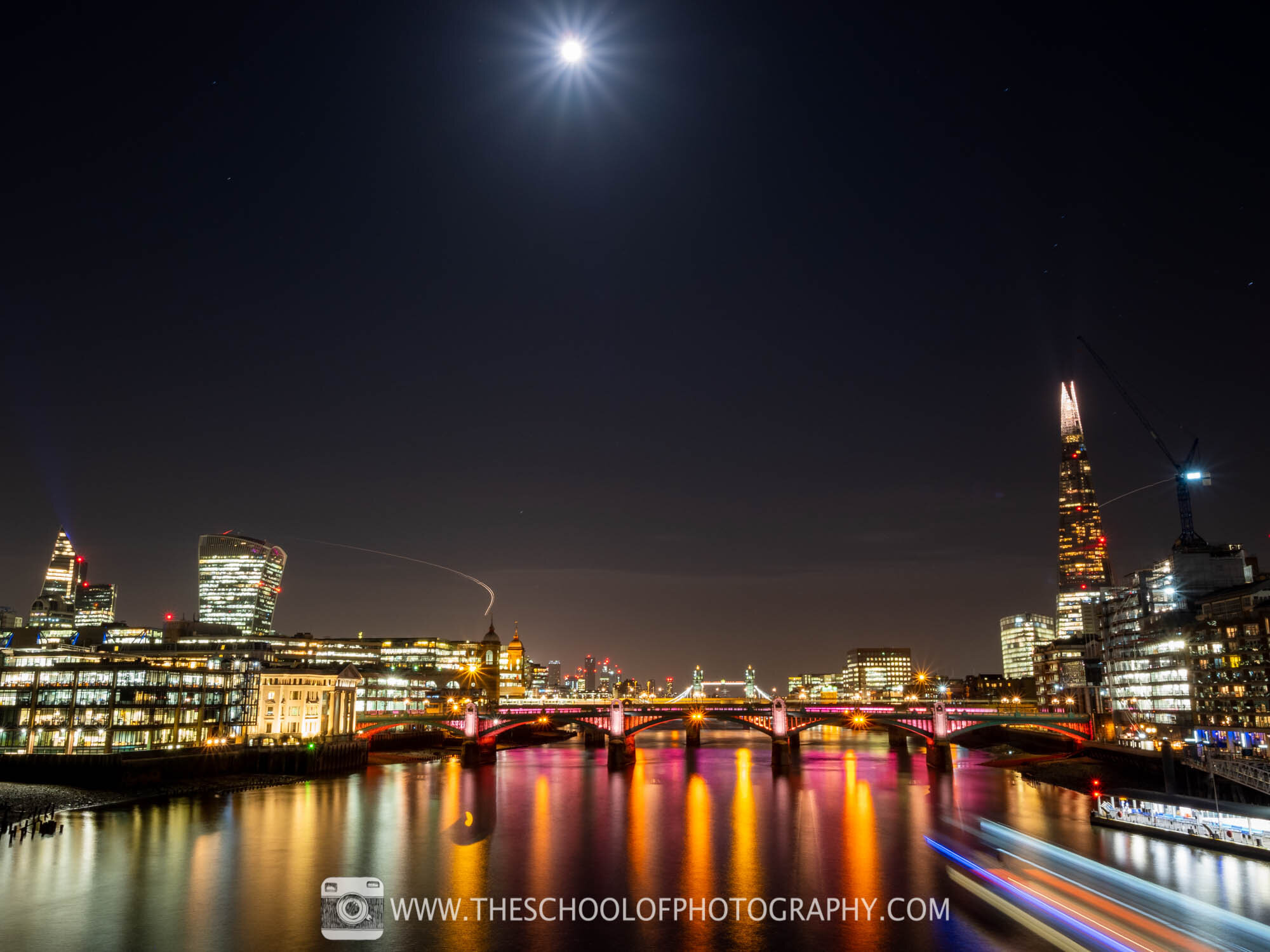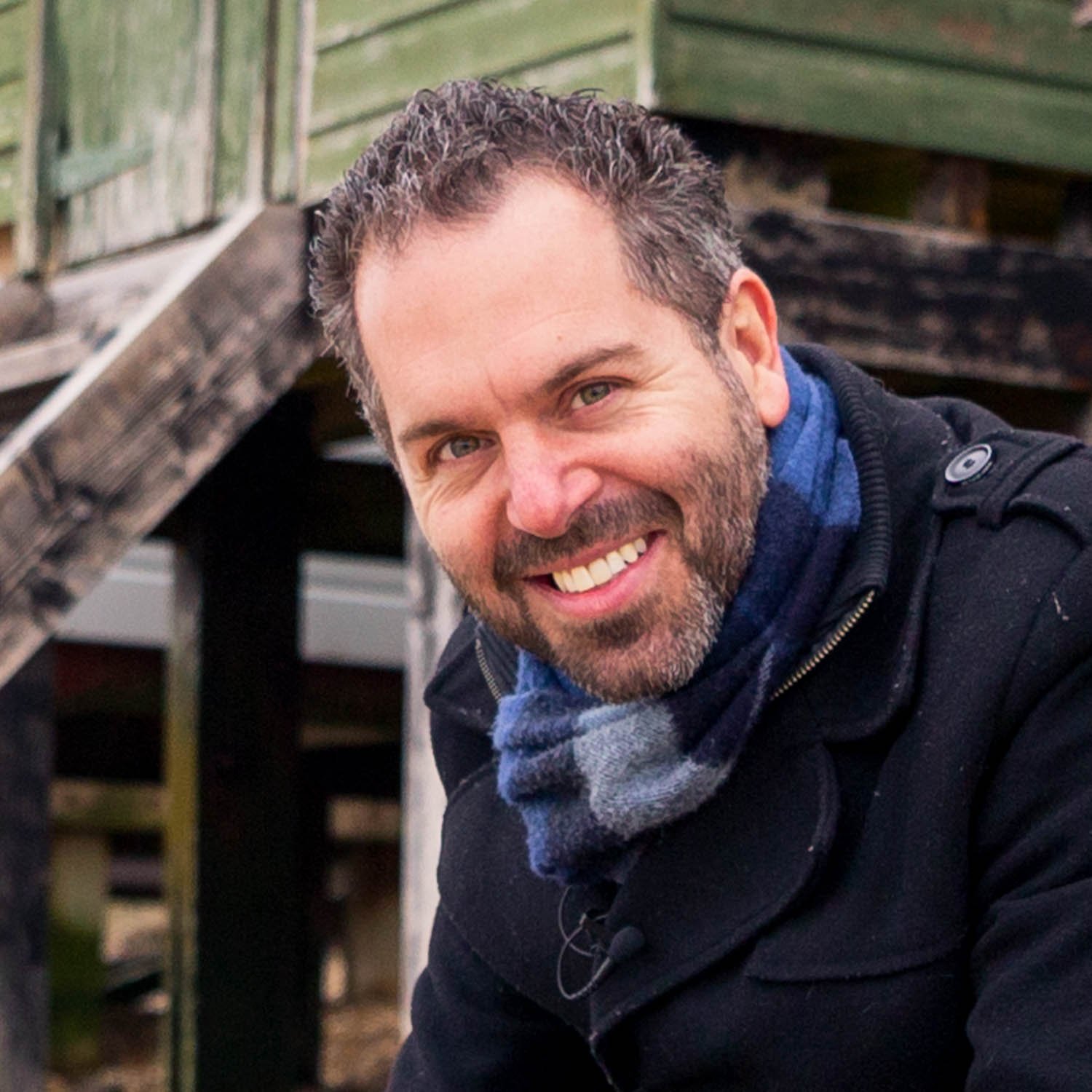Settings for Night Photography - Ultimate Guide to Exposures
If you’ve tried night photography your settings probably resulted in dark, dull pictures. Well, fear not my photography friends, here we have the ultimate settings for night photography which will ensure you get those exposures correct every time.
Plus, we are giving you a free downloadable guide to night photography which you can take with you on your shoot. Grab this below:
Get access to ALL our online courses – 1000’s of videos, worksheets, critiques of student’s work, personalised support and much more with our monthly membership.
Equipment needed for Night Photography
Before we talk about camera settings for Night Photography, let’s talk about the equipment you’ll need. You’ll need a camera that goes into full manual mode. This will enable you to take full control over the camera settings. An easy way to check if your camera has this function is to look at the top of the camera and see if it has a dial with the letter M (for manual) on it. If yours has this, it will be fine for photographing the night.
A standard zoom lens is fine for this type of photography but if you have one, an ultra-wide-angle lens will enable you to get those vast stretched out scenes of bridges over water and alike.
Learn more about the equipment you need in our ‘Photographing Cities at Night’ course.
Taken with an ultra-wide angle lens. Camera Settings - f 16 – 30 Seconds - ISO 400 - 16mm focal length, full frame Camera
Camera that goes into full manual mode
You’ll need a camera that goes into full manual mode. This will enable you to take full control over the camera settings.
Tripod
You will need a good sturdy tripod to take the weight of your camera. As it’s dark, exposure times shooting the night sky will be long, therefore your camera needs to be dead still. Avoid using cheap flimsy tripods as these could cause your camera to move in the wind or make your set up top heavy. Learn more about specific camera equipment on our Beginner’s Photography Course.
Remote trigger and cable release
Whist your taking pictures during night photography you cannot touch the camera as you will get camera shake. To enable this you will need a remote trigger or a cable release, this will enable you to fire off the camera without touching it.
Wide Angle Lens
Although not necessary, it’s a good idea to use what’s called an ultra-wide angle lens.
Additional reading: Best Beginners Photography Equipment 2021
Night Photography Camera Settings
As mentioned previously, you have to go fully manual for this type of photography but don’t let that put you off as it’s a simple set up. Below is how to set up your camera for night photography:
M – Manual mode.
Shutter Speed – 30 to 60 seconds. As it’s dark, a longer shutter speed will give enough time to let a lot of light to enter the camera. If you find your photography coming out too dark, increase the time, if your photos are coming out too light, decrease the time.
Aperture – f8, f11 or f 16. This is to create what’s called a long depth of field and allows you to create an image that is sharp from the foreground to the background. As with the shutter speed, you can make your shots lighter or darker with the aperture. Start at f11 and if the image is too light, go to f16, if it’s too dark, go to f8.
ISO – 100 or 200. This is to reduce noise. Noise in an image creates a speckly look with dull colours. To get a clean crisp and colourful night photograph, you will need as little noise as possible.
Set White Balance to Auto. Night photography usually has lots of different light sources with lots of different colours. Shooting in Auto White Balance gives you a good middle ground which can be adjusted as needed back in post-processing programs like Lightroom. Another option is to set the camera’s white balance to Daylight. This will capture colours as they are, but I find the photos come out too orange when doing it this way.
Manual Focus. As it going to be dark, your camera will find it hard to focus onto something. To tackle this, focus onto something lit in the distance, then switch lens to manual focus to fix the focus point.
Shoot in Raw. This is optional but highly advised. Shooting in Raw will give you much more scope when, or if, you post-process the shot. Further details below.
If the camera settings here have confused you, please take a look at our Beginner’s Guide to Photography.
For our full in depth course on ‘Photographing Cities at Night’, click here.
Download these settings and take them with you at the top of this page.
Camera Settings - f 16 - 60 Seconds - ISO 100 - 17mm focal length, full frame Camera
Night Photography Techniques
There are plenty of ways to do night photography. The camera settings shown here will create that classic night photograph of the city lights, and if there are rivers, it will make the water look like glass and enhance any reflections. For these types of shots, think carefully about the composition. Diagonals in night photography work well as they create dynamism and enable the eye to flow easily through the frame, especially with bridges.
Although using a standard zoom lens will do the job fine, an ultra-wide-angle lens will help create those vast scenes of the city skyline or long bridges over the river. An ultra-wide-angle lens is usually an extra lens that you have to buy. It will have a focal length of approx. 16mm on a full-frame camera, 11mm on a crop sensor camera and 8mm on a micro 4/3 camera. To put it simply it goes a bit wider than your standard kit lens. Learn about lenses and focal lengths here.
Camera Settings - f 16 - 60 Seconds - ISO 200 - 14mm focal length, micro 4:3 camera
Although not necessary it’s highly recommended to shoot in Raw and post-process night photography in programs like Lightroom or Photoshop. There are so many lovely colours at night and post-processing will help enhance and boost those colours for a more aesthetic feeling. There is also a lot of contrast in night photography due to the bright lights against the dark sky. Shooting in Raw will give you much more play to lift shadows and deepen highlights within the scene and this in turn, will create a more balanced exposure. If you don’t do this, you could produce shots which look too dark or too bright.
Raw image straight out of camera
Processed shot using Lightroom. Camera Settings - f 16 – 15 Seconds - ISO 200 - 16mm focal length, full frame Camera
Examples of Night Photography
Camera Settings - f 11 - 30 Seconds - ISO 200 - 14mm focal length, micro 4:3 camera
Camera Settings - f 11 - 30 Seconds - ISO 200 - 16mm focal length, full frame camera
Learn more about taking picture of cities at night with our ‘Photographing Cities at Night’ course.
Like this? - Check out similar tutorials below
I hope you liked this video, please leave us a comment and support us by sharing it with your friends and subscribe to our newsletter at the bottom of this page for more.
We also have an excellent learning community on social media so please join us there as well.
Thanks for watching and remember – Learn more at The School of Photography.

